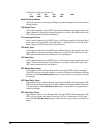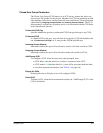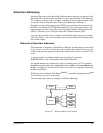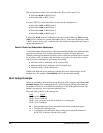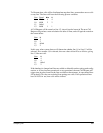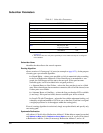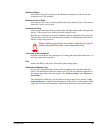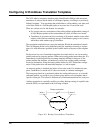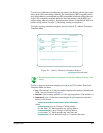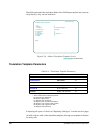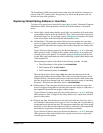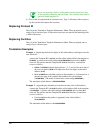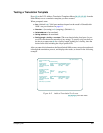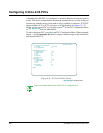
8-26 SmartSwitch 1800 4.0 User Guide, Rev 01
Configuring X.25 Address Translation Templates
The X.25 address translation function in the SmartSwitch 1800 provides automatic
translation of selected fields within a Call Request packet, according to a previously
defined "template." You can change the called address, calling address, user data, and/
or facilities fields of a Call Request packet as it passes into or out of the node.
There are various uses for this feature; for example:
●
For security reasons, a translation of the calling address might enable routing of
all Call Request packets with certain addresses, while all others are cleared.
●
Translation of user data can allow rerouting of all packets with the same called
address, with all those containing one type of information going to one location,
while those with another type go elsewhere.
The translation template has two parts: the template ID and the translation formula.
The Call Request packet can be modified (using the translation formula) to replace
parts of it with characters specified by the formula and/or with parts of the template
ID.
Each port has two sets of translation templates associated with it, one for incoming
packets and one for outgoing packets. When an incoming packet enters the node, it is
immediately checked against any incoming template defined for that port. If the
packet matches the template, a translation is carried out and the packet continues
toward its destination, using the routing tables defined by SVC Subscriber configu-
ration. If the packet does not match the template, it is not accepted.
An outgoing packet is checked just before it leaves the node. If it matches the tem-
plate, a translation is carried out; if it does not match, it continues unchanged.
The hunt group function is performed within the routing table process, so to handle
outbound packets, a port that is part of a hunt group needs a set of templates that is
specific to that port. This allows a different set of outbound translations for each port.
Address translation is especially useful in providing backup routing via a public data
network (PDN), as represented in the following example.
Figure 8-8 Backup Using Address Translation
Primary route failed
Node 1
Node 2
Backup route over PDN



